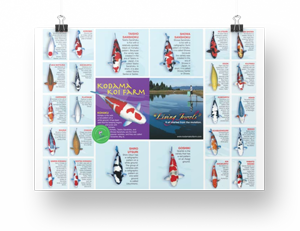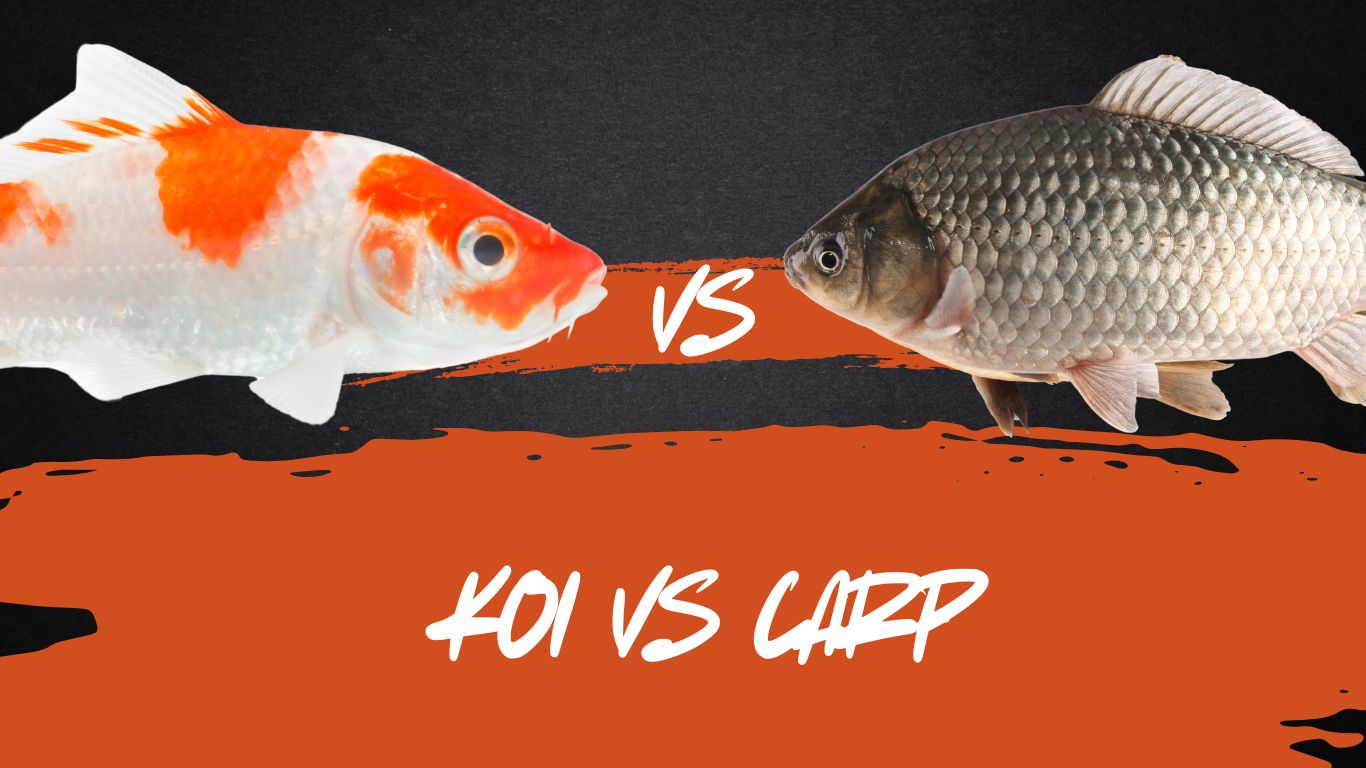
Carp Evolution and Mutation: Where Koi and Carp Began
Both koi and carp originate from the Cyprinus carpio species, giving them shared genetic traits. Carp were domesticated over 2,000 years ago for their adaptability, thriving in various environments. Yet, in Japan, genetic mutations were selectively bred for vibrant colors and patterns, leading to koi, or Nishikigoi. These aesthetic and symbolic evolutions distinguish koi from their hardy carp cousins, making koi a cultural icon in Japan and worldwide as ornamental fish prized for their beauty and meaning.
Colorful Koi vs. Plain Designs Carp
Carp Fish Appearance
The common carp (Cyprinus carpio) is a large, freshwater fish with a distinctive appearance characterized by a sturdy, elongated body and two barbels near its mouth. Its scales vary from bronze and golden tones to dark gray, often with a metallic sheen. Typically, carp have a broad, rounded head and a powerful, fan-like tail, enabling them to navigate various water conditions. Fins are generally tinted with hues of red or orange, enhancing their visibility in the water. Carp also exhibit adaptability in size, color, and scale patterns, making them one of the most diverse and recognizable fish species worldwide.
Carp Facts:
- Wild Species – Carp are found naturally in rivers and lakes, particularly in Europe and Asia.
- Dull Coloration – Unlike koi, wild carp typically have drab colors like brown and green.
- Highly Invasive – Carp are considered an invasive species in many parts of the world.
- Bottom Feeders – Carp stir up sediment while foraging, which can disrupt ecosystems.
- Resilient – Carp are hardy fish that can survive in poor water conditions.
- Fast Growers – Carp can grow rapidly in nutrient-rich environments, reaching up to 4 feet.
- Eaten Worldwide – Carp are consumed as food in many countries, especially in Asia and Europe.
- Can Alter Water Quality – Carp increase water turbidity, which can reduce clarity.
- Wide Range of Habitats – Carp thrive in rivers, lakes, and ponds with slow-moving water.
- Long History – Carp have been kept as food fish for thousands of years across many cultures.
Koi Fish Appearance
Koi are celebrated for their vivid colors and intricate patterns, available in red, white, black, yellow, blue, and more. These different koi colors contribute to their visual appeal and symbolic richness. Each koi’s unique markings make it a stunning work of art, appreciated in competitions and shows. In contrast, common carp typically have plain, muted colors like brown or olive, lacking the brilliance and design that make koi so visually captivating. For a pond that impresses, koi’s ever-changing palette is unmatched.
Beyond ponds, koi carp have become icons in the art world—especially in koi fish tattoo design—because of their bold visual impact and symbolic meaning. Their flowing shapes and striking contrasts translate beautifully into ink, making a koi fish tattoo a popular choice for expressing strength, perseverance, and transformation. One of the most appealing aspects of a koi fish tattoo is its versatility in design and koi tattoo placement—from full back pieces to elegant arm, leg, or shoulder tattoos, allowing for creative expression that fits the body’s natural lines.
KOI FACTS
- Domesticated Carp – Koi are ornamental, selectively bred from wild carp.
- Brightly Colored – Koi are known for their vibrant colors like red, white, yellow, and black.
- Symbols of Good Luck – In Japanese culture, koi represent success and perseverance.
- Long Lifespan – Koi can live for 25-35 years, with some living over 100 years.
- Smooth Swimming – Koi swim elegantly and are a popular feature in garden ponds.
- Cold-Water Fish – Koi can survive in cold temperatures but are most active in warmer waters.
- Require Careful Water Quality – Koi ponds need high water quality to keep the fish healthy.
- Non-Aggressive – Koi are peaceful fish and can live with other species.
- Grow Based on Environment – Koi can grow up to 3 feet, depending on their habitat size.
- Intelligent and Trainable – Koi recognize their feeders and can be hand-fed.
Where can you buy koi fish? At Kodama Koi Farm, we offer a diverse selection of high-quality koi, perfect for enhancing any water garden. Discover your ideal Nishikigoi and bring vibrant color and elegance to your pond.
You may also Check Out Our Live Koi Collection.
Types of Carp: Identifying Common, Mirror, Leather, and Other Wild Carp Species
Carp are a fascinating and varied group of freshwater fish, each type with unique features and behaviors that set them apart.
Here are some Types of Carp:
Common Carp
Olive brown fish with large scales
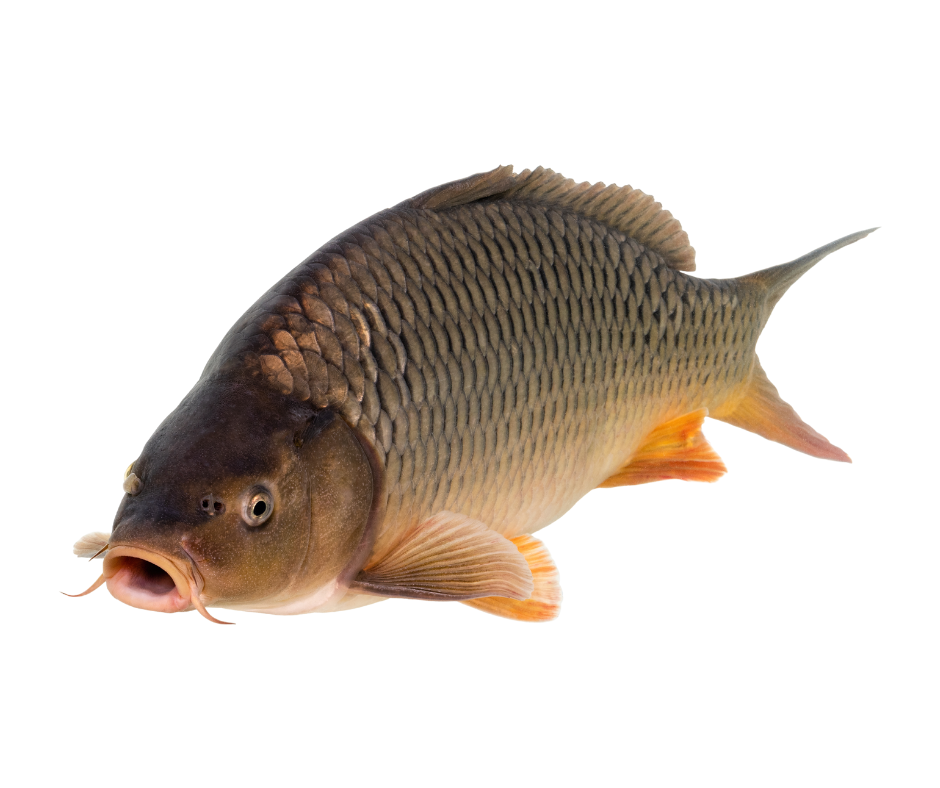
Mirror Carp
Irregular, large, reflective scales
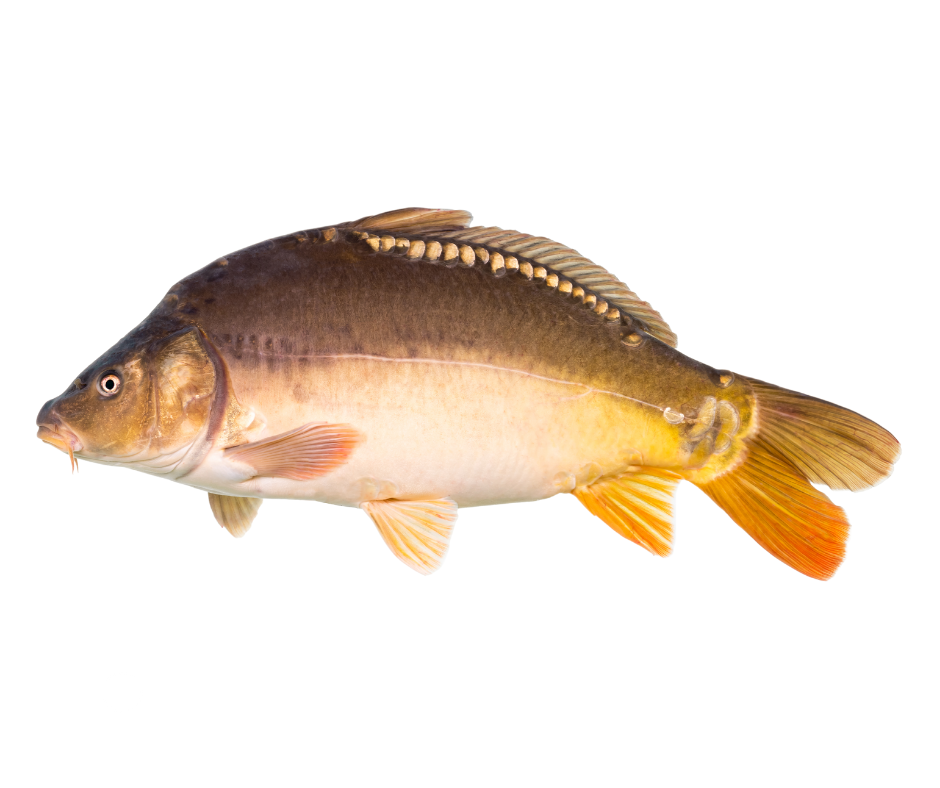
Leather Carp
Mostly scaleless with smooth skin.
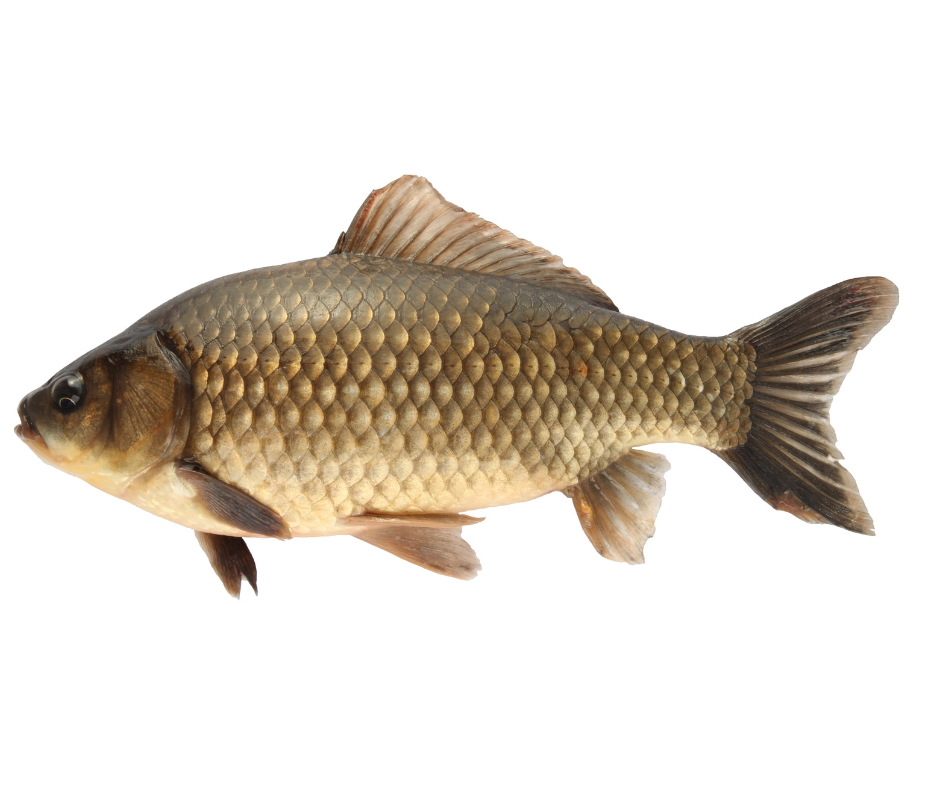
Crucian Carp
Smaller, bronze-colored freshwater
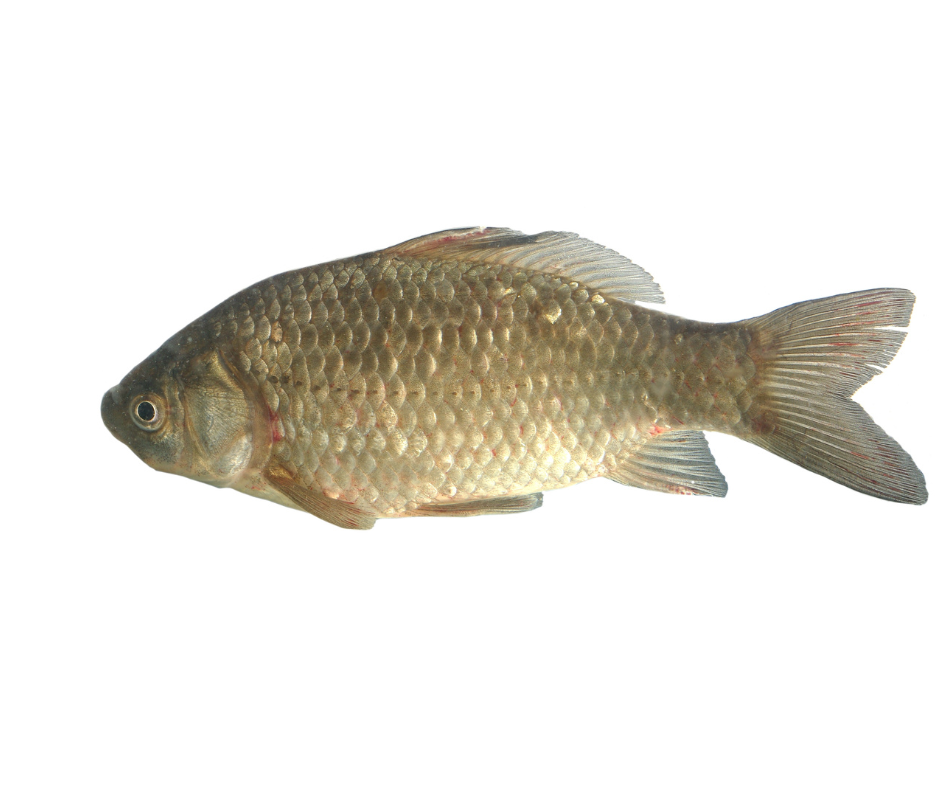
Grass Carp
Long, slender with greenish scales
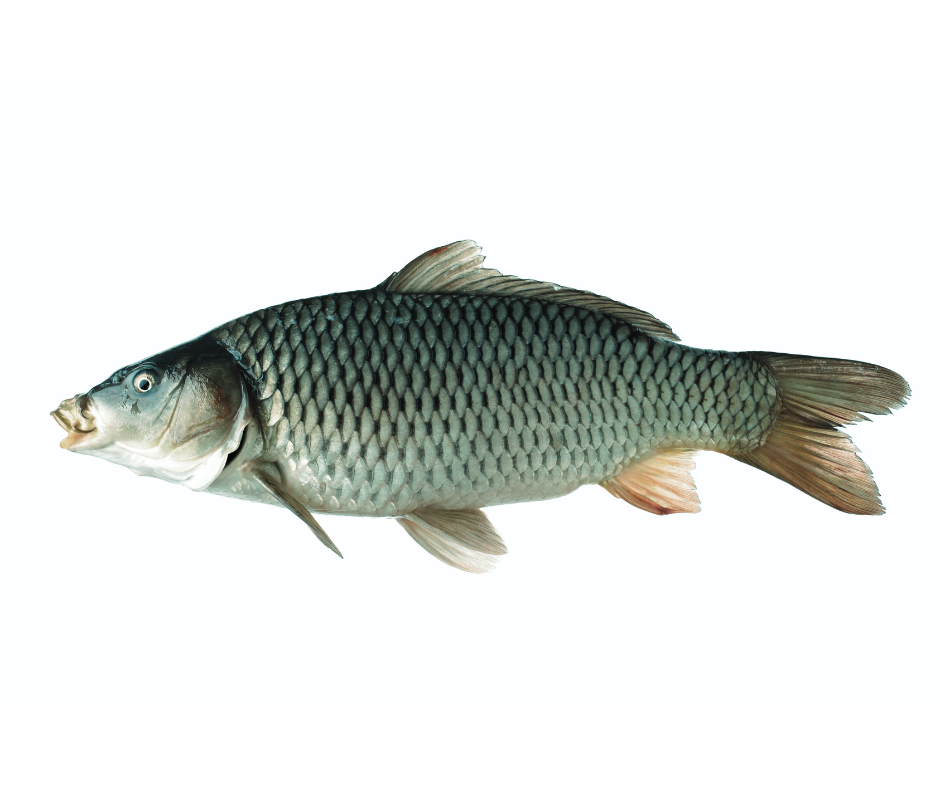
Silver Carp
Silvery carp with a large head
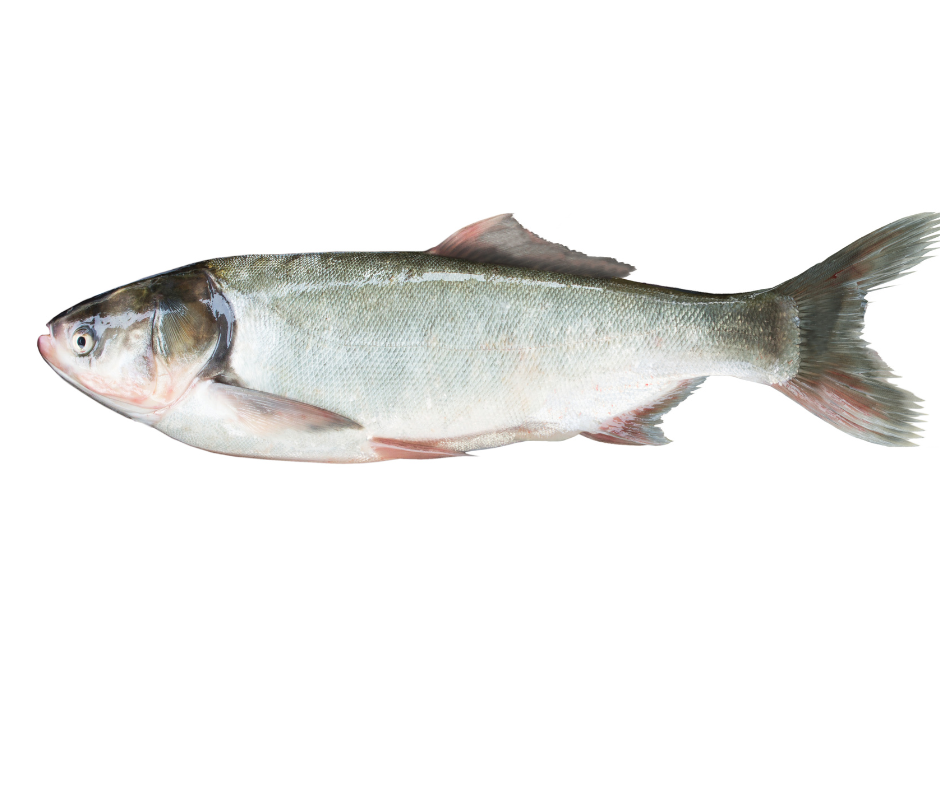
Comparing Carp to Koi: Koi Fish Unique Beauty
Here’s a quick look at some koi varieties and how they compare—each has its own unique beauty, so feel free to explore further!
- Kohaku – White koi with red markings. Read more about Koi Fish Kohaku…
- Sanke – White koi with red and black spots. Read more about Koi Fish Sanke…
- Showa – Black koi with red and white patterns. Read more about Koi Fish Showa…
- Utsuri – Black koi with white, red, or yellow markings. Read more Koi Fish Utsuri…
- Asagi – Light blue koi with red underside. Read more about Koi Asagi…
- Shusui – Scaleless, blue koi with red sides. Read more about Koi Shusui…
- Tancho – White koi with a single red spot on the head. Read more about Tancho…
- Ogon – Solid metallic-colored koi, typically gold or platinum. Read more about Koi Ogon…
- Doitsu Koi – Scaleless koi, with smooth, reflective skin. Read more about Doitsu Koi…
- Ginrin Koi – Koi with sparkling, reflective scales. Read more about Ginrin Koi…
Discover the Legacy of Nishikigoi
Explore the enchanting world of Nishikigoi, koi fish that embody beauty and deep cultural significance, at Kodama Koi Farm. Our page on What Is Nishikigoi: History & Meaning delves into their fascinating evolution from common carp to the revered ornamental fish they are today.
Why Nishikigoi Matters
Nishikigoi are living symbols of perseverance and grace, rich in Japanese tradition. On our page, you’ll learn about: 
- Cultural Significance: The deep meanings behind koi in Japanese culture.
- Breeding Practices: The meticulous methods that create stunning colors and patterns.
- Varieties of Koi: Discover the unique characteristics of different koi types.
Ready to enrich your pond with Nishikigoi? Visit our page to learn more and find the perfect koi for your water garden. Explore the Legacy of Nishikigoi Now!
Pond Size and Design Requirements for Koi and Carp
Koi need larger ponds to accommodate their significant size and active swimming habits.
Space Needs for Carp:
Carp are adaptable and thrive in smaller ponds but still require ample room.
Depth Requirements:
Koi ponds should be deeper to prevent jumping and support their larger size, while Carp can tolerate shallower depths.
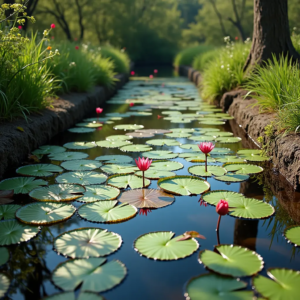
Koi and Carp Feeding and Nutrition Differences
- Koi Feeding Requirements: Detail Koi’s need for specific food types and dietary considerations to maintain vibrant colors and health.
- Carp Feeding Habits: Discuss how Carp, being less selective, will eat a wider variety of foods, including some plant-based items in the pond.
- Seasonal Adjustments: Note how feeding changes for each during winter and summer months.
Creating the perfect pond for Koi or Carp starts with the right equipment and maintenance plan. For expert guidance on keeping your pond clean and healthy, check out Kodama Koi Farm’s maintenance tips.
For High-Quality Pond Products browse Kodama Koi Supply’s pond equipment for all the essentials you need to support a thriving Fish Pond environment!
On the other hand, common carp, though less colorful, are known for their resilience and adaptability in various environments.
Whether you’re drawn to the stunning aesthetics of koi or appreciate the robust nature of carp, Both fish offer unique contributions to aquatic ecosystems and the joy of pond enthusiasts. Understanding these differences can help you choose the right fish for your pond and enhance your aquatic experience.

